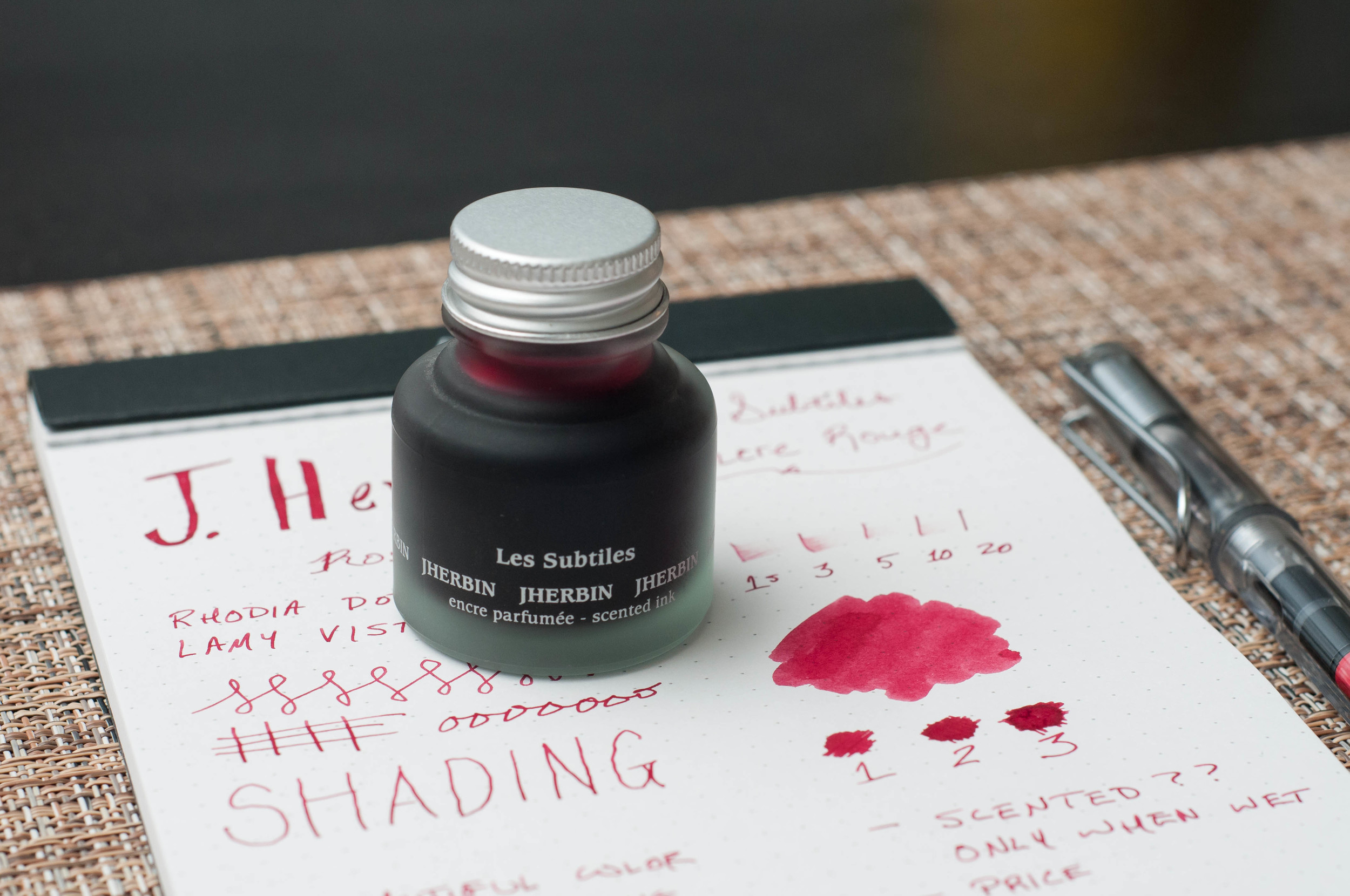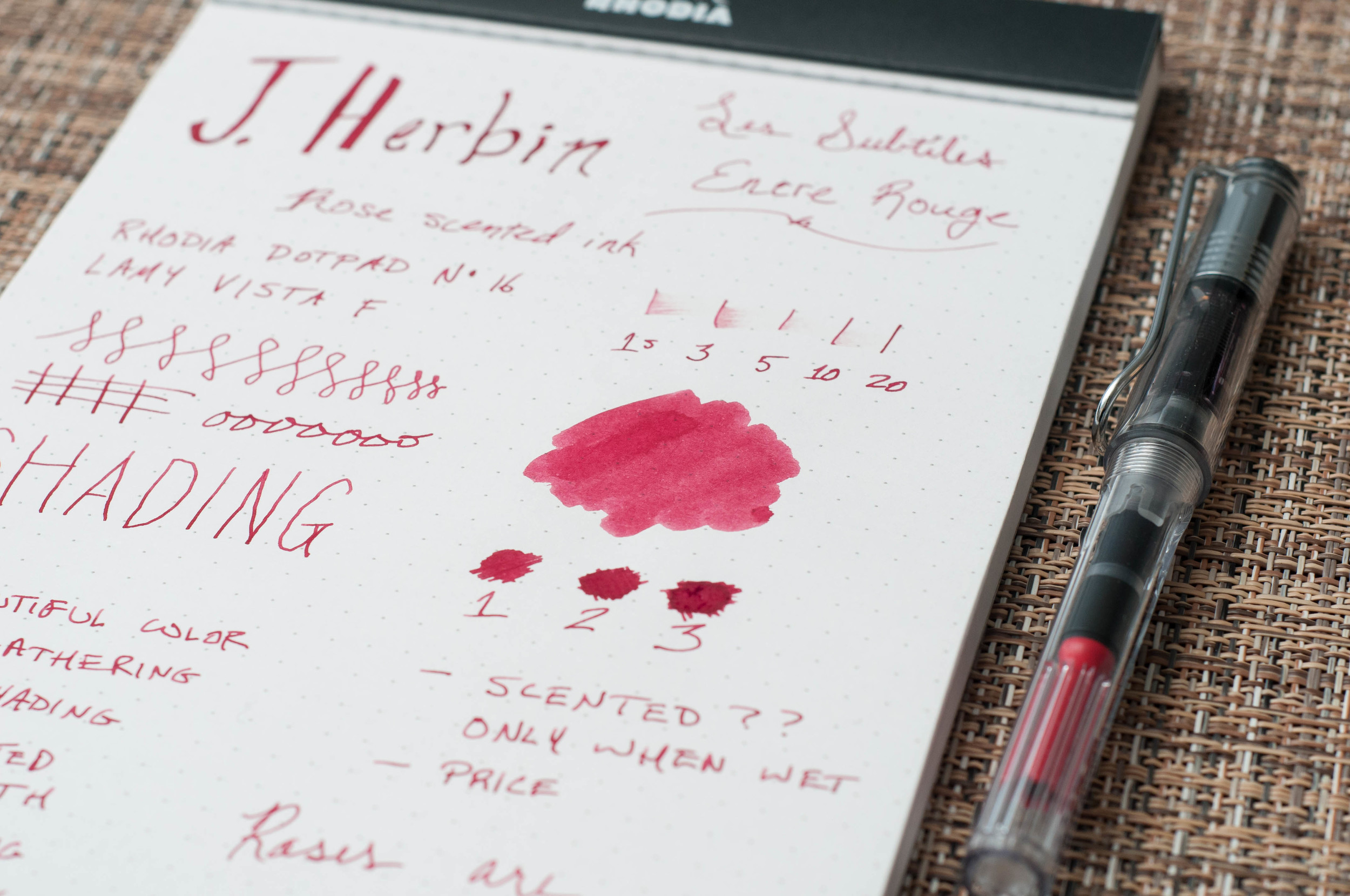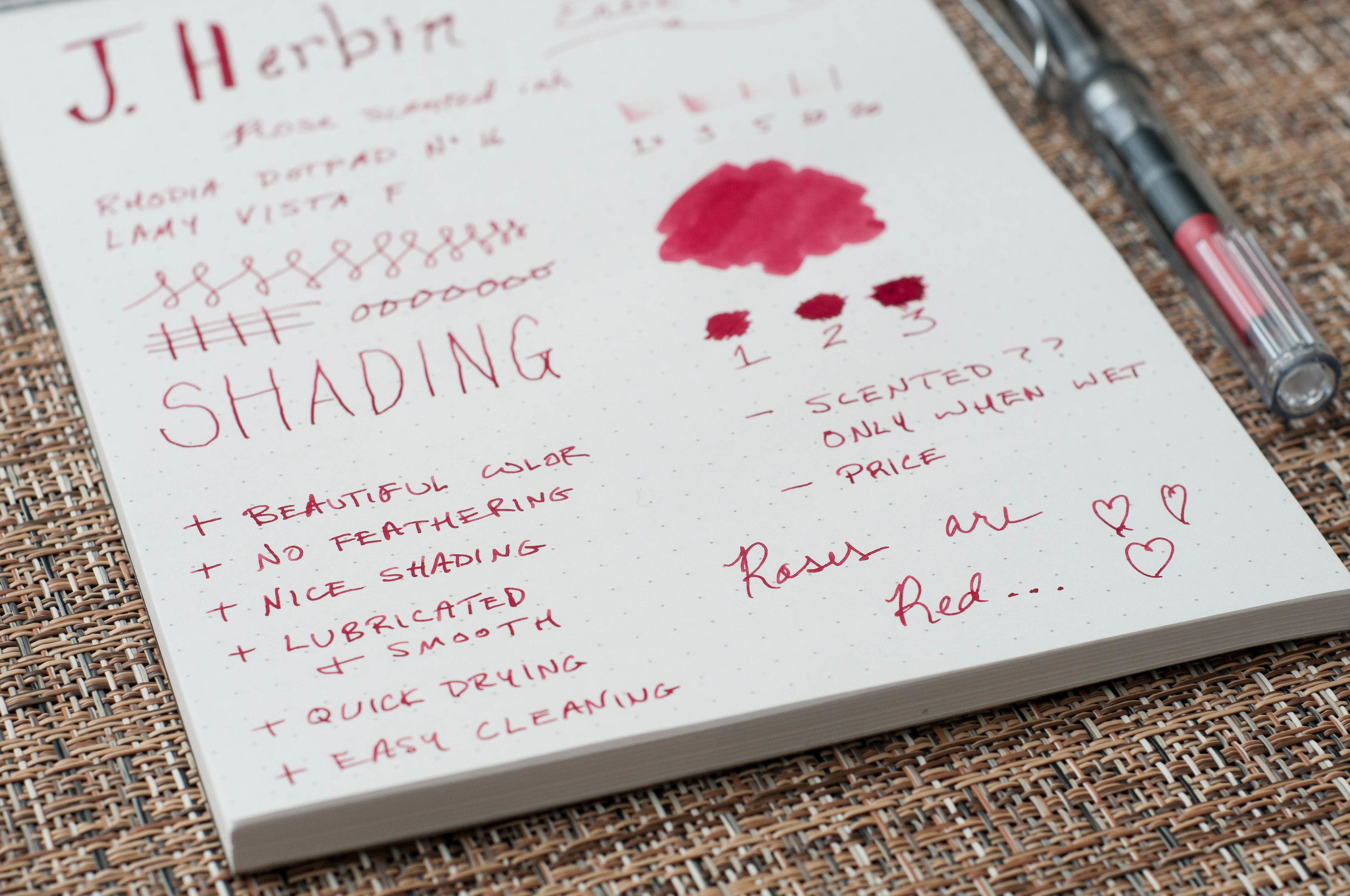Before we look at the writing qualities of this ink, let's talk about the special part: the scent. Remember scratch-and-sniff stickers from grade school? This is a more grown-up version of that in a way. The scent of this ink is roses, and from what I can smell, it's dead on. It's not overpowering when writing -- it smells like fresh roses are sitting on the desk next to you. That's about all you get though. Once the ink dries, the scent all but vanishes. That's my major complaint for this ink. The scent just doesn't last once the ink dries.
When writing a letter with this ink, I would expect the scent of roses to greet the reader upon opening the letter. This just isn't the case. Only the writer gets to enjoy the scent.
It's still an interesting concept. Here's how J. Herbin describe the process of infusing scents into ink:
J. Herbin scented inks are made from floral water (hydrosols) of rose, orange, lavender, apple and violets. The hydrosols used by J. Herbin come from Grasse, France, a Provencal town long associated with the perfume industry and famous for its floral scents.
Fancy!
Now, on to the writing qualities of this ink. This is where I'm really happy. I describe the color as a medium red. I can see faint shades of brown in some of the lines, but it looks more like oxblood to me. Mostly, the lines just look like the color of red rose petals. Based on Brad's description of red inks, I'm not sure if I'd call this a dark or bright ink. It seems to possess qualities of both. On one hand, I can detect some oxblood/brown shades, but it also seems to pop off the page. What do you think? Dark or bright?









